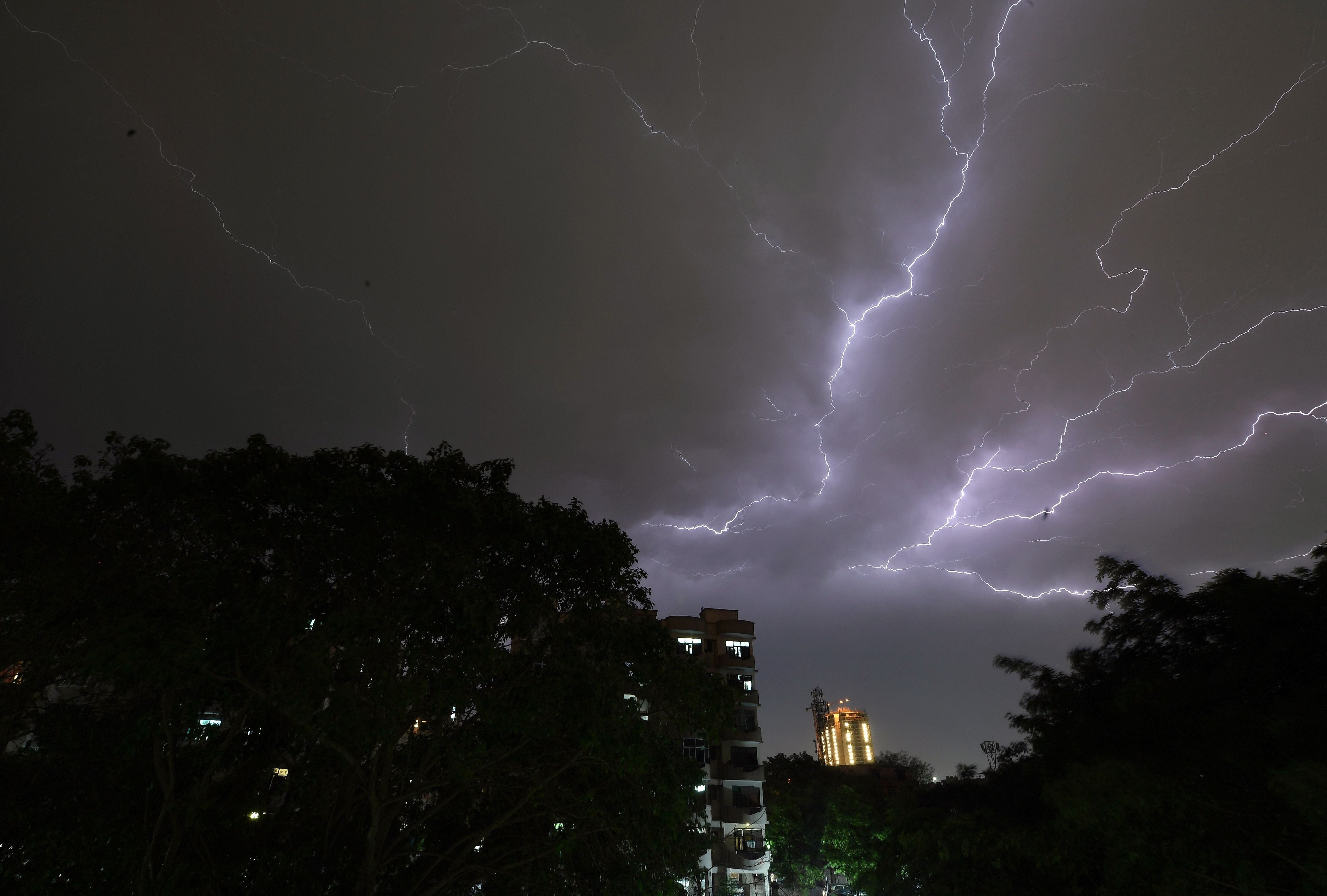A new study finds that lightning deaths are soaring in India, in part due to climate change.
Lightning strikes are increasingly killing people in the South Asian country, with more than 101,000 deaths between 1967 and 2020, or about 1,900 each year, according to researchers.
While increased awareness and urbanization are expected to result in more people being protected, studies have shown a sharp increase in the number of deaths in the past decade alone.
This worrying trend has made lightning one of the major climate-related hazards in India.
While the total number of lightning strikes has not been directly measured, the data on fatalities highlights a dire picture of increasingly unpredictable and frequent lightning activity across the country.
A study led by researchers at Fakir Mohan University in Odisha found that the average number of deaths per state rose from 38 per year between 1967 and 2002 to 61 per year between 2003 and 2020, coinciding with India’s population reaching 1.4 billion.
The monsoon season, which runs from June to September, usually brings much-needed rains to the Indian subcontinent but it also increases the risk of lightning strikes and is “increasingly unpredictable”, the study said.
Scientists say global warming is contributing to the increase in lightning by creating more favorable conditions for lightning to occur.
Rising temperatures increase the amount of water vapour in the atmosphere, which cools at higher altitudes and creates an electrical charge that produces lightning. This makes lightning strikes more frequent and more deadly.
India’s rural population has been disproportionately affected, with most of the victims being working-class people who often seek refuge under trees or in fields when storms hit.
The lack of effective early warning systems and public awareness about lightning safety exacerbates the problem.

Despite advances in weather technology, such as the installation of 129 lightning detection sensors across the country, many of these systems fail to provide timely warnings to those at risk.
Jharkhand and Bihar states in eastern and central India are among the regions most affected by lightning strikes. These regions experience unique climatic conditions where hot, dry air from the northwest meets moist easterly winds, creating an environment conducive to lightning strikes.
Previous the study They also suggest that air pollution may also be a factor in the increased lightning activity: aerosols such as dust and pollution particles can increase the friction between the particles that create lightning, making lightning strike more frequently.
In response to the growing threat, 16 of India’s 36 states and union territories, including Bihar and Jharkhand, have declared lightning a state disaster.
The designation will provide compensation of 400,000 rupees (about $4,766) to the families of the victims. While this financial assistance is helpful, it does little to prevent the loss of life in the first place.
The researchers say improved safety measures, better early warning systems and increased public awareness are urgently needed to reduce the impact of lightning in India.
the study It has been shown that a certain increase in temperature can lead to a 12 percent increase in lightning strikes.







